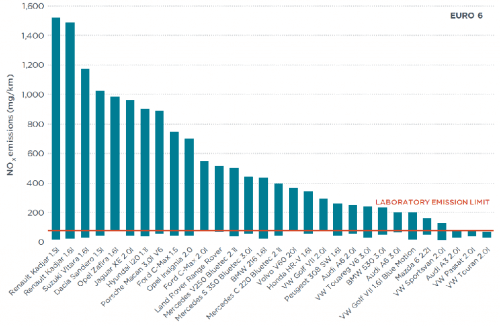
A study by the International Council on Clean Transportation (ICCT) has found that modern diesel cars produced more than double the amount of toxic emissions than new lorries and buses.
Research examining real world emissions tests – rather than those in laboratory conditions – found that Euro 6 lorries and buses produced an average of 210 milligrams of nitrogen oxide per kilometre after testing 24 heavy-duty vehicles. This was compared with an average of 500 mg/km for new diesel cars. On average, the real-world NOx emissions from diesel cars were six to seven times the limit of 80mg/km mandated by the Euro 6 standard.
New diesel cars are legally required to produce a maximum of 80mg/km. However, the tests are carried out under laboratory conditions, for which car manufacturers tend to use prototypes that have been designed to perform well. In contrast, for the past two years lorries and buses have been subject to random tests of vehicles already on the road.
The ICCT said the reason for the difference is because the heavier vehicles were subject to much stricter official pollution tests than cars.
In April, all of Britain’s most popular diesel cars exceeded the legal limit for safe levels of pollution, with toxic emissions up to 14 times higher than claimed by manufacturers.
The study noted: “Data indicates that real-world NOx emissions from light-duty Euro 6 diesel vehicles in everyday operation routinely fail to comply with the emissions limits defined in the Euro 6 regulation. EU regulators have been working to improve that regulation. Two significant changes to the passenger vehicle emissions type-approval test protocol will be phased in the beginning in 2017.
“The recently finalized Real Driving Emissions (RDE) test protocol will be required for new vehicle types in September 2017, and will be fully phased in for all new registrations by September 2019.”

